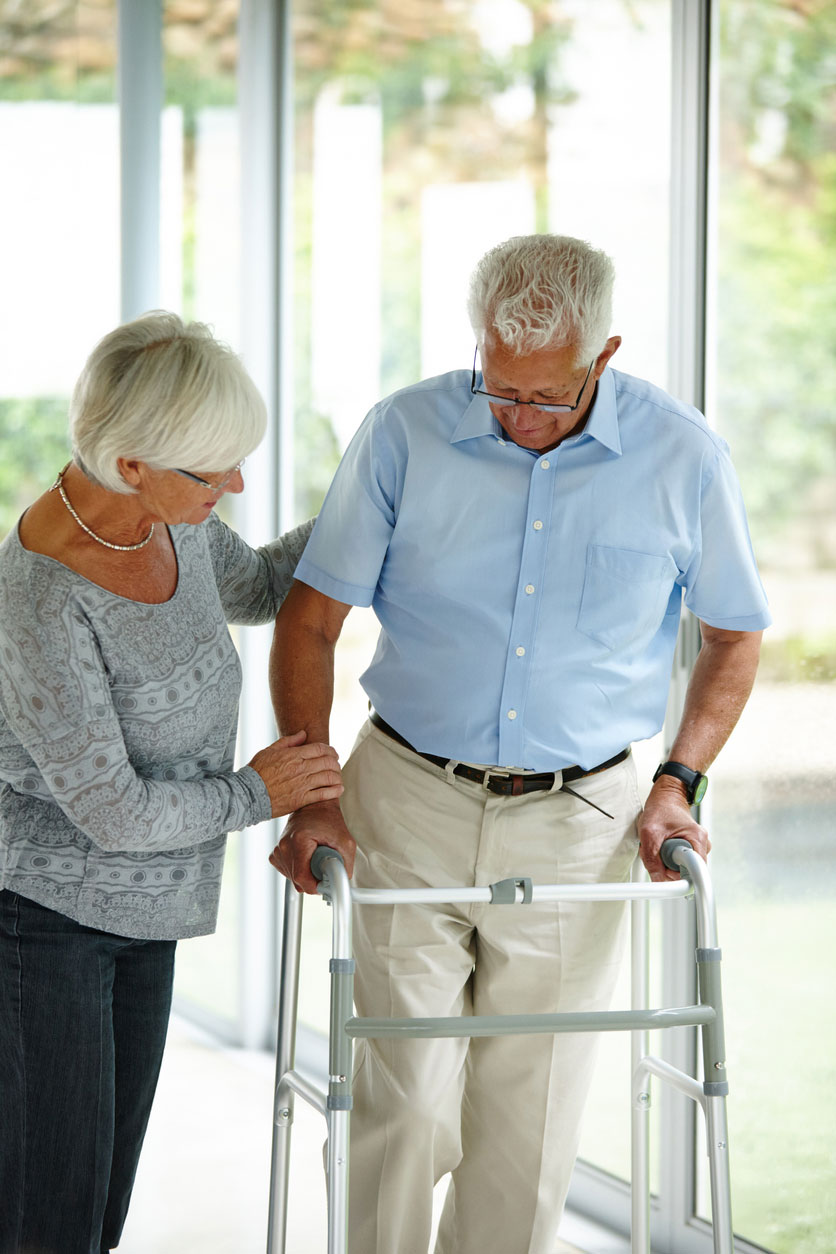
There are many different types of arthritis, but osteoarthritis (OA) is the most common form. Also known as degenerative joint disease (DJD), it is caused by “wear and tear” of the joints and can result in considerable chronic pain, which can then lead to disability. Some of the risk factors for developing OA include obesity, muscle weakness around the joint, repetitive activity, and previous joint injury. The pain associated with OA is caused by an erosion of cartilage, narrowing of the joint space, and deformity of the bone within the joint; and the most common sites of the body to develop OA include hands and fingers, the big toe, hips, knees and spine. If you experience pain in your joints, it is important to discuss this with your family medicine provider. Once diagnosed, the goal of treatment is to minimize pain and to help you maintain independence in performing your everyday activities. The following are some things that you can do at home to deal with arthritis pain, and to improve your quality of life.
Weight Control
Being overweight is a contributing factor to developing OA, and it will continue to worsen the condition over time. Any extra weight you might be carrying increases the load and stress on your joints, leading to further degeneration. Your overall good health is greatly affected by your intake of foods with high nutritional value. Your joints are no exception to this rule. Studies show that even a small amount of weight loss can improve your joint health, so increase the fruits and vegetables, whole wheat grains, and low-fat proteins in your diet, while decreasing the amount of simple sugars, starches and high fat foods; and watch your portion sizes. Remember that regardless of your food choices, if you take in more than you put out, you will gain weight. Ideally, you body mass index (BMI) should be between 18.5 and 24.9.
Exercise Balanced with Rest
Regular, gentle exercise is important to maintain joint function and will help with pain management. While physical therapy can be very beneficial, there are a lot of exercises that you can do at home. Water exercise is an exceptional way to increase joint movement, while minimizing stress on the joint. Bicycling is another excellent choice. Isometric exercises, which improve muscle strength and support joint function, involve contraction of muscles without joint movement. For instance, holding a plank position allows the contraction of multiple muscle groups, while avoiding undue stress on any one joint. Another important way to protect your joints is to strengthen the muscles around them by performing weight-bearing exercise. To start out, it is best that you perform exercises that use your own body weight, such as squats, calf raises, lunges or push-ups. It has been found that moderate to vigorous exercise, at least three times per week, can lead to marked improvement in joint pain. But remember, before starting any exercise program, you should discuss it with your family medicine provider.
As helpful as exercise is to joint health, it is important to not overdo it. Listen to your body. If something is painful, stop. Also, if you find your joint pain increases throughout the day as a result of normal activities, stop and take a break. Rest will often result in a decrease or resolution of pain. And, make sure you are getting adequate amounts of sleep at night.
Heat/Ice
The application of heat will often relieve the pain of arthritis. Try a hot shower or bath when your joints are aching. Gel pads that can be warmed in the microwave are available over the counter, but follow the directions carefully on the package and check the temperature with your wrist before applying it to your painful joints. However, electric heating pads should be avoided because of the risk of burns and fires. You might also try applying an over the counter liniment or preparation with camphor, eucalyptus, or capsaicin, which many people find does a good job in relieving arthritis pain.
Ice is another way to treat joint pain, although often not as effective as heat. In particular, if you are experiencing inflammation or swelling from overuse or injury, ice may be beneficial. When you use ice, make sure to not put the ice pack directly on your skin. Instead, place a small cloth or towel between the pack and your skin to protect your skin from injury. If you don’t have an ice pack, try a frozen bag of corn or peas.
Medication
The most important thing to remember is to discuss any medication you are taking with your family medicine provider. There are many products that you can obtain over the counter that may not be good to take over an extended period of time. For instance, NSAIDs such as ibuprofen or naproxen may be good for an acute injury, but taken on a regular basis, these drugs can cause kidney problems, heart problems, and stomach problems. They also increase your risk of bleeding. The number one drug of choice to control arthritis pain is acetaminophen. It is safe and effective for most people if taken as directed on the packaging. However, everyone is different so please discuss all over the counter medications with your family medicine provider before taking them.
To learn more about arthritis, its treatment, and what you can do to control pain and improve your joint function, call Advanced Medical PA at (561) 434-1935 to request an appointment, or request one online.

